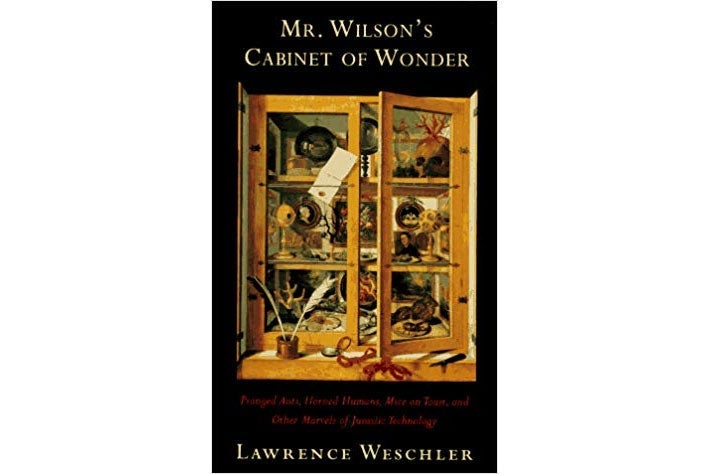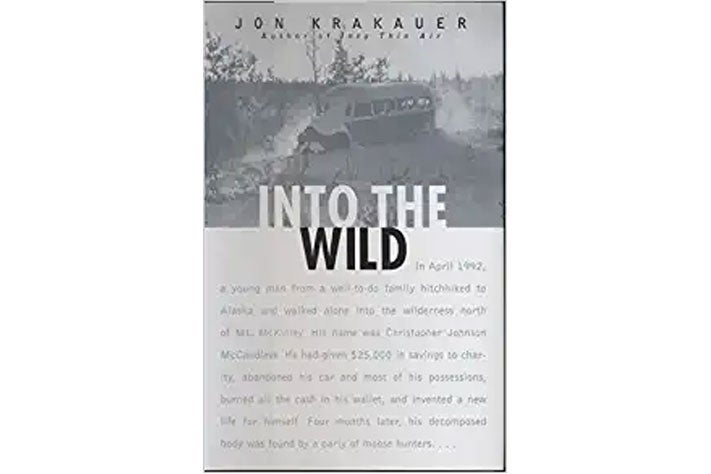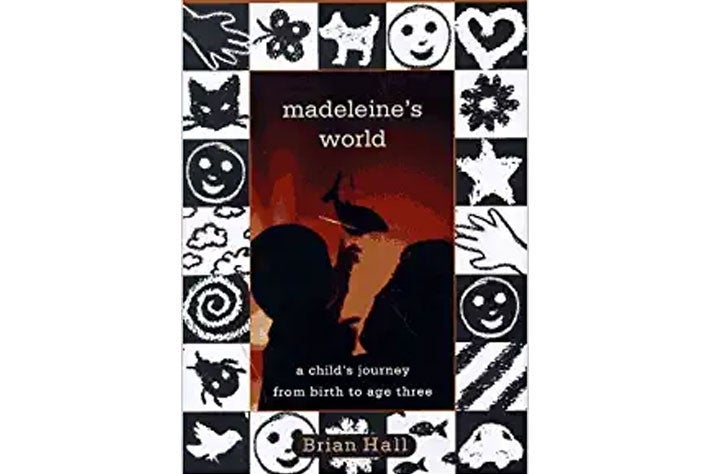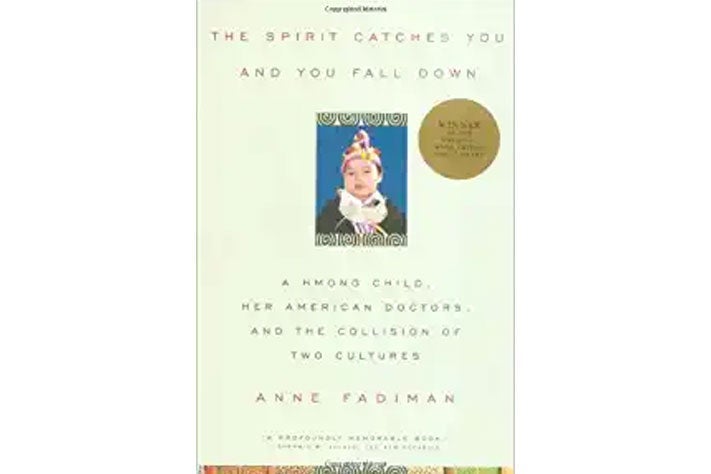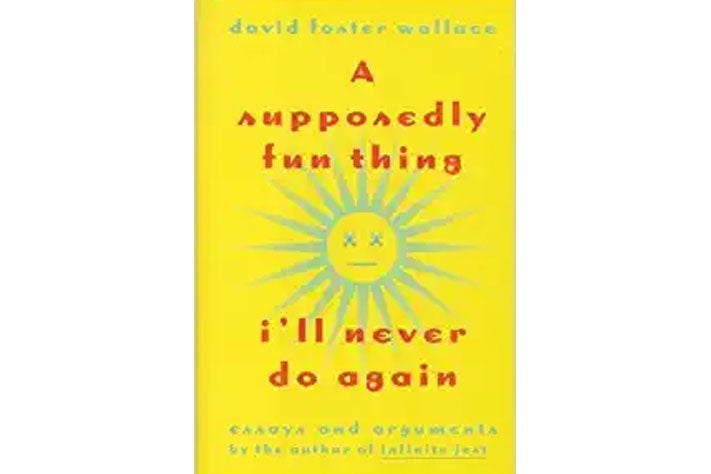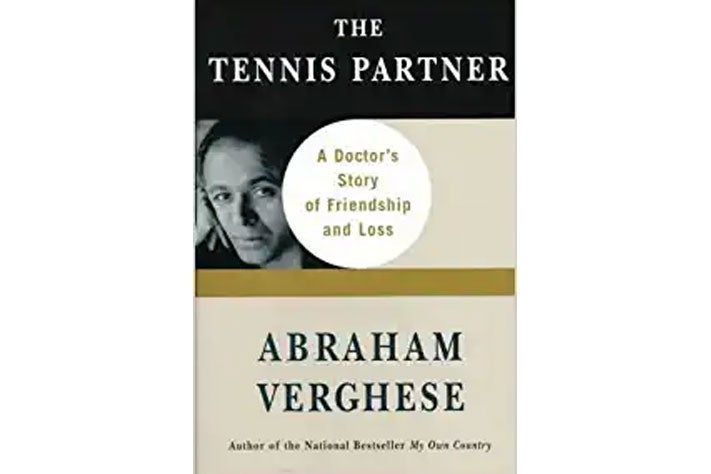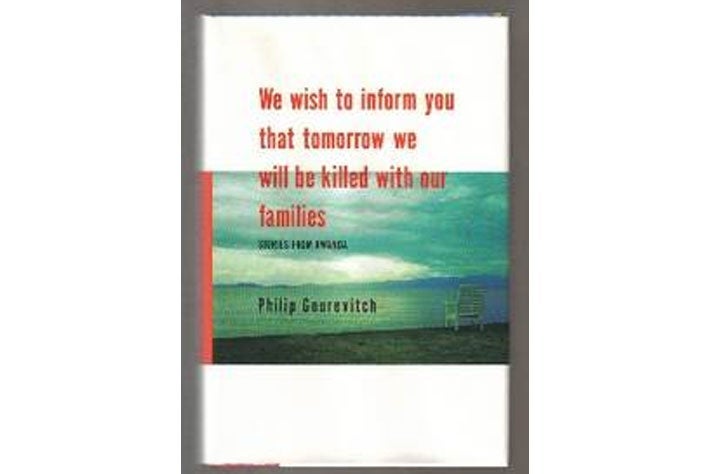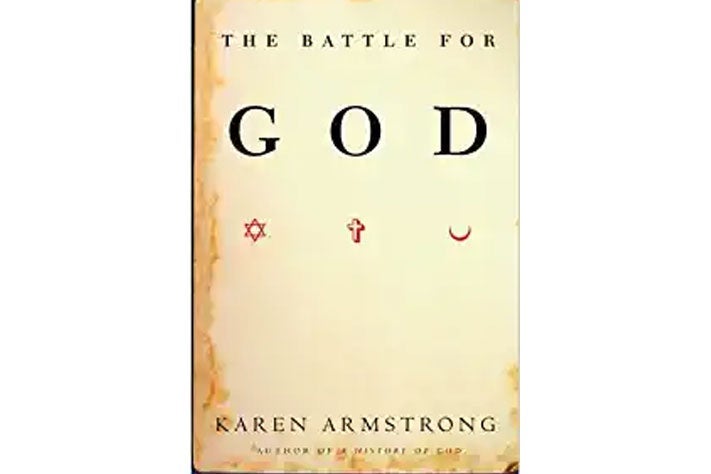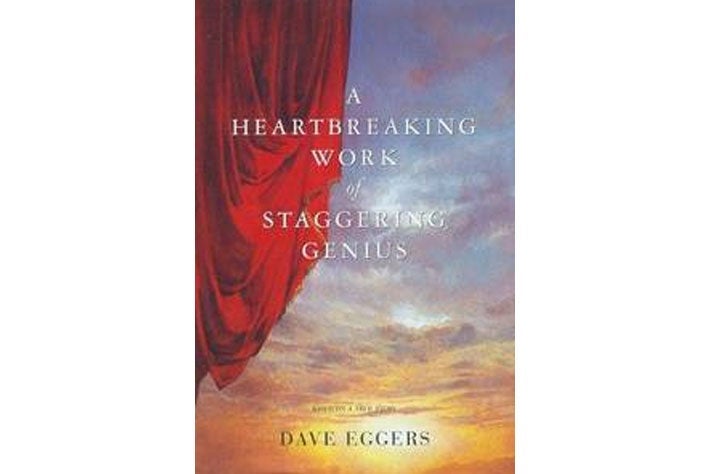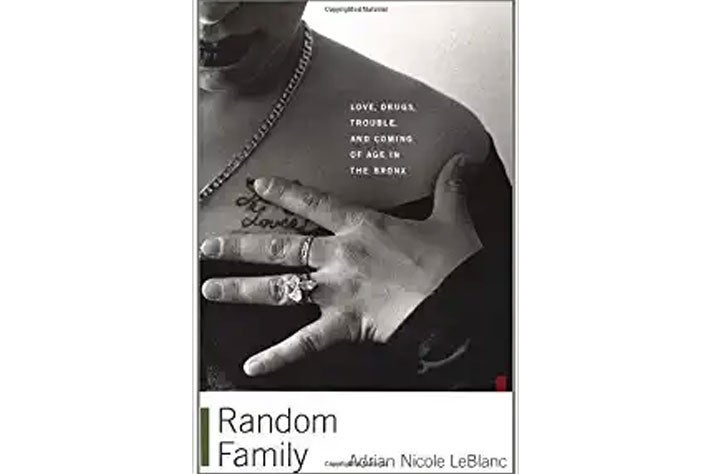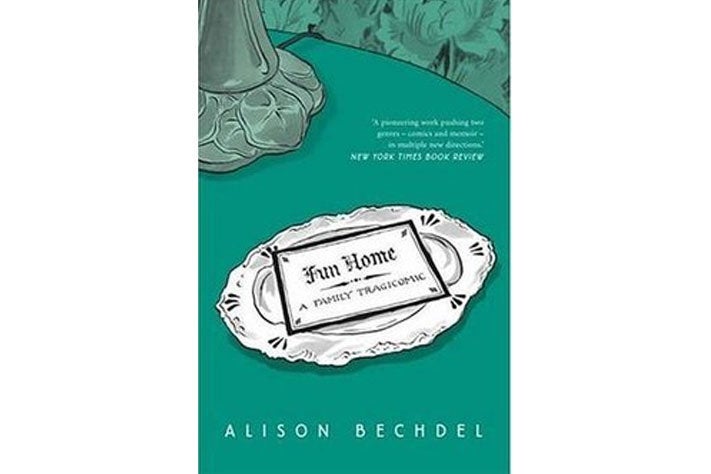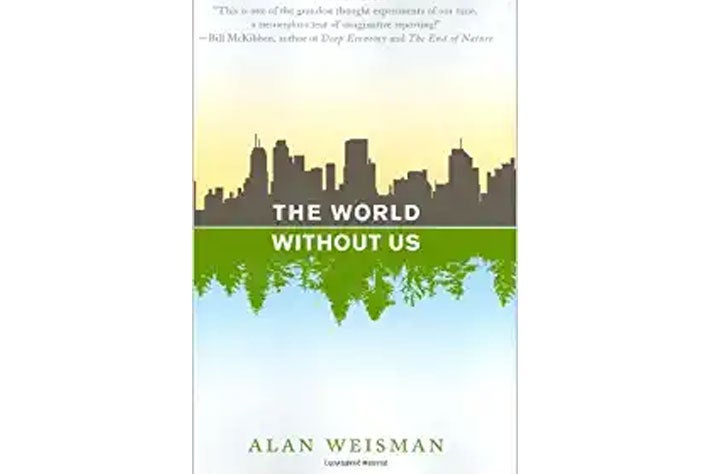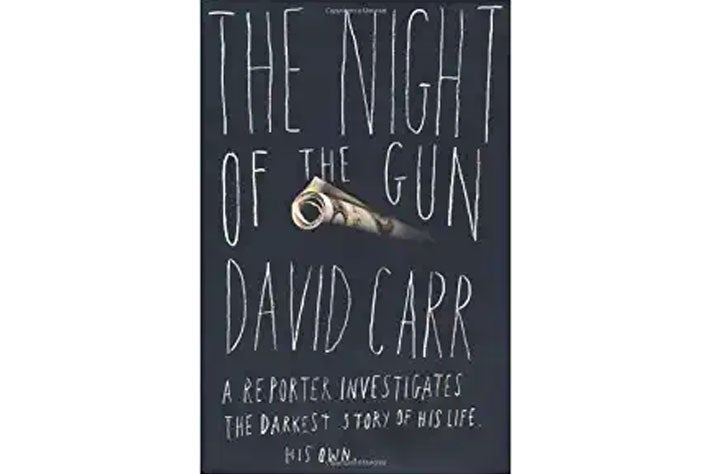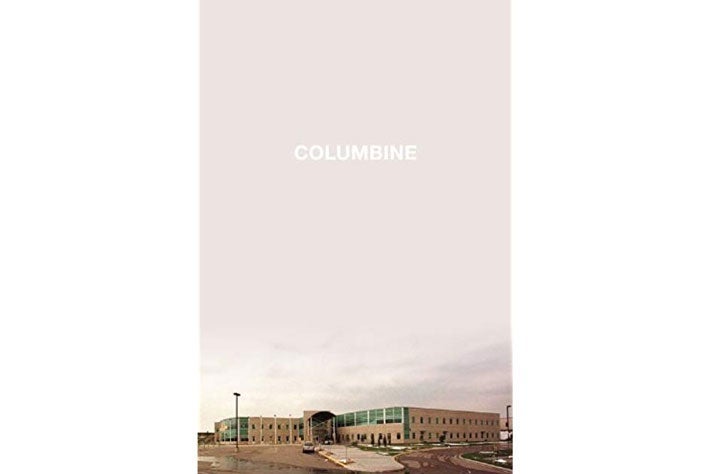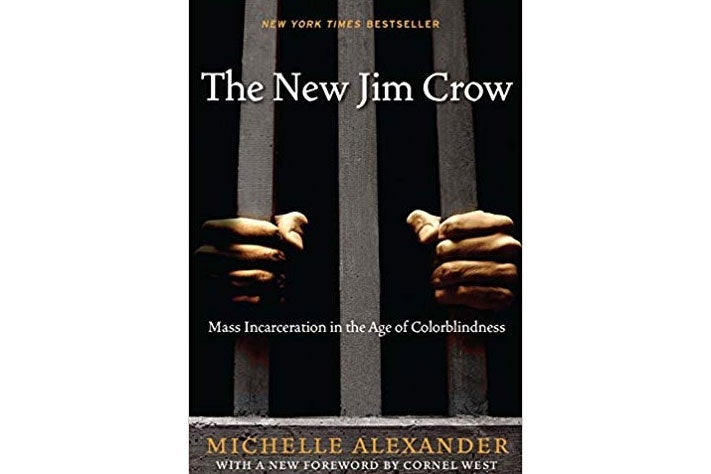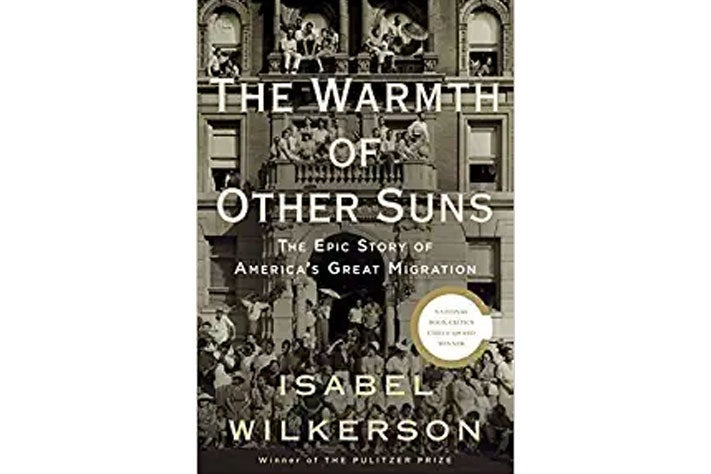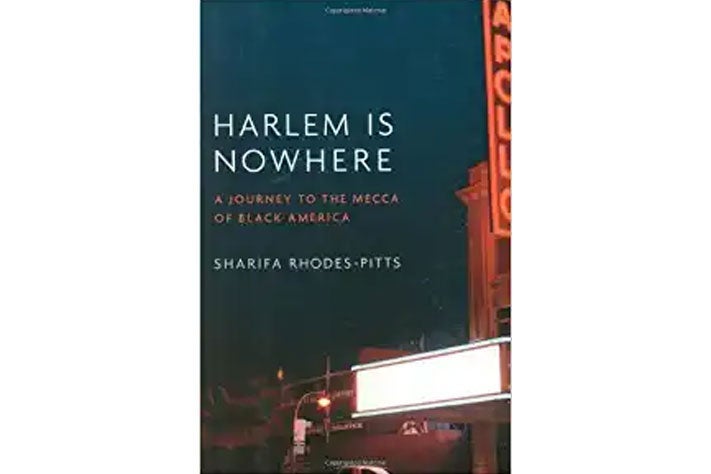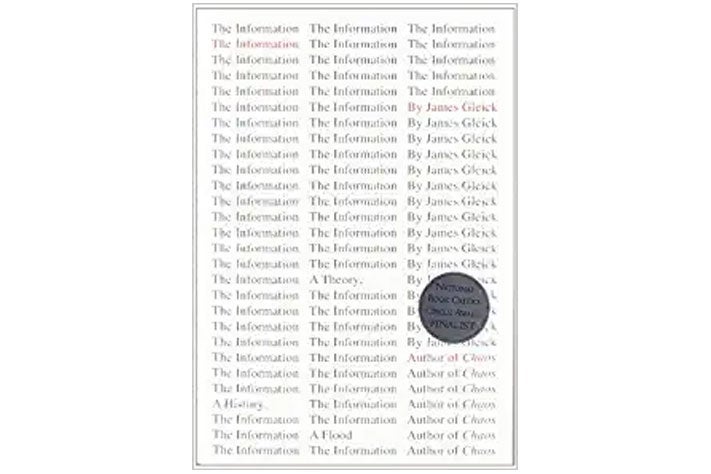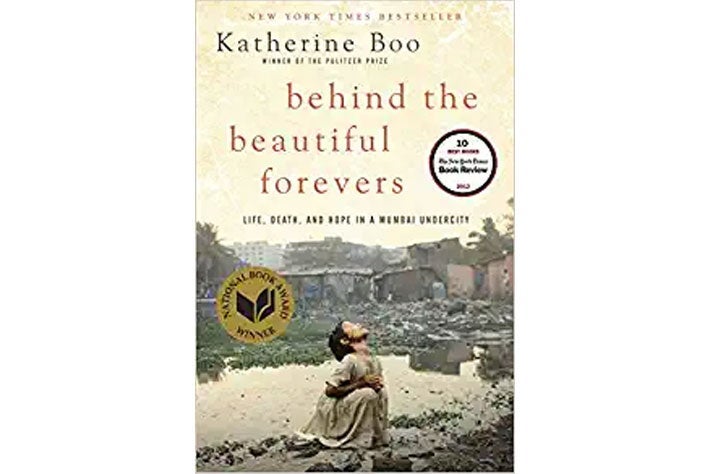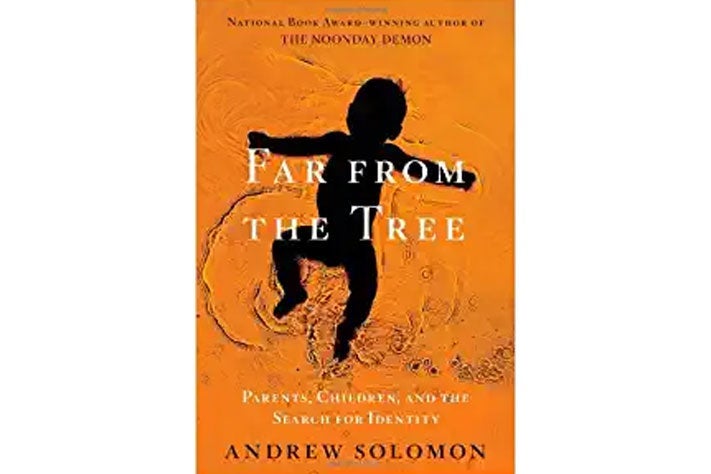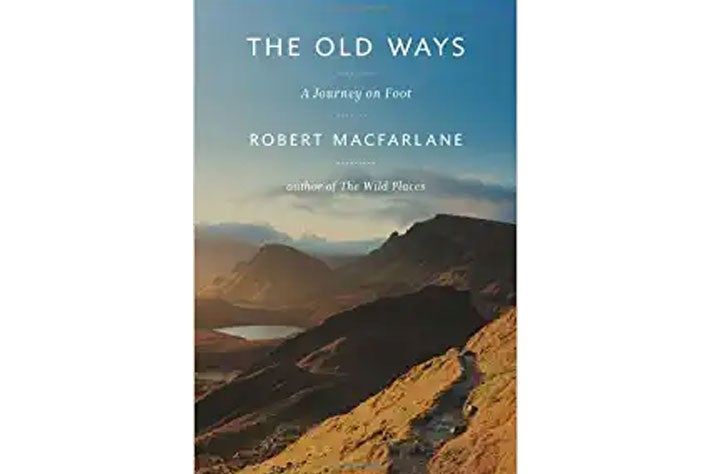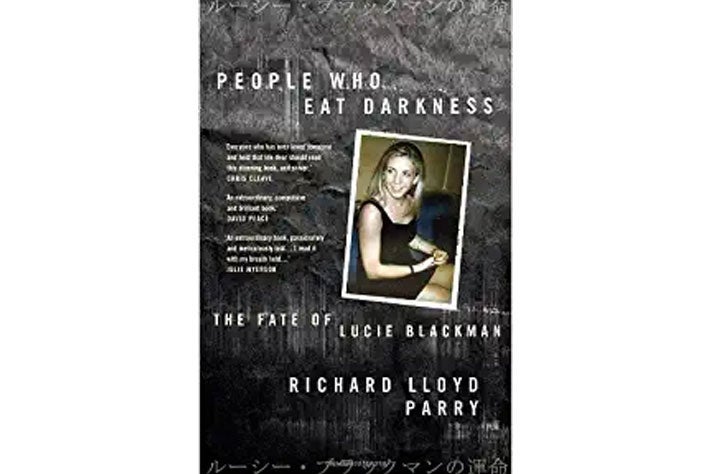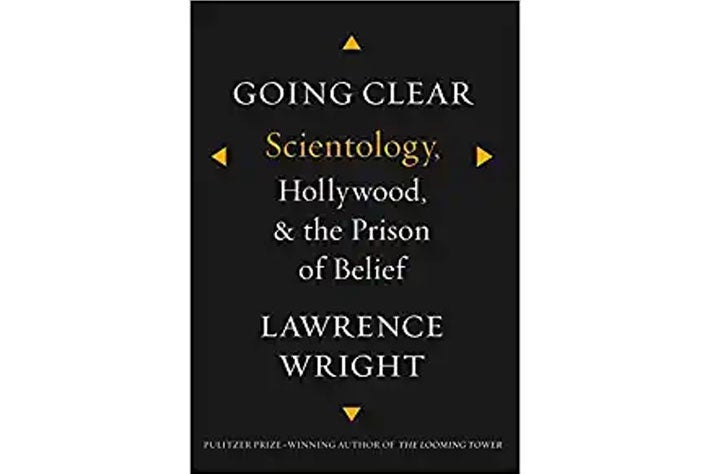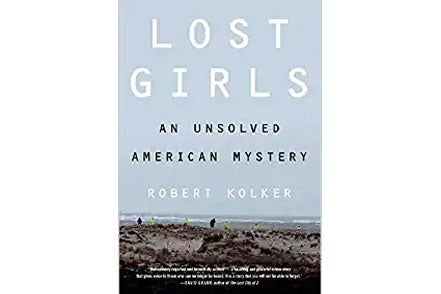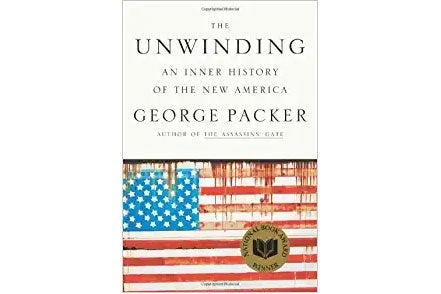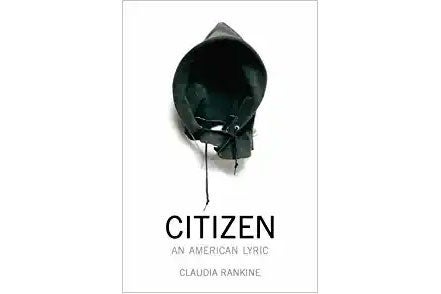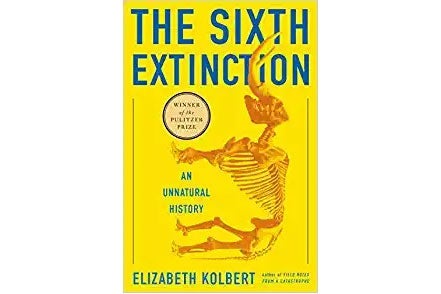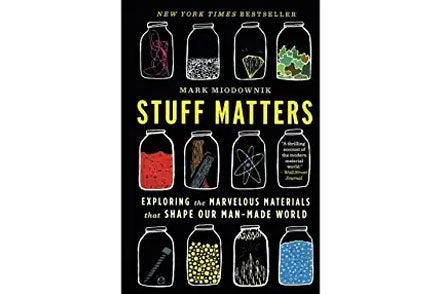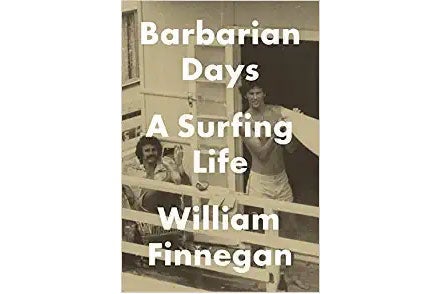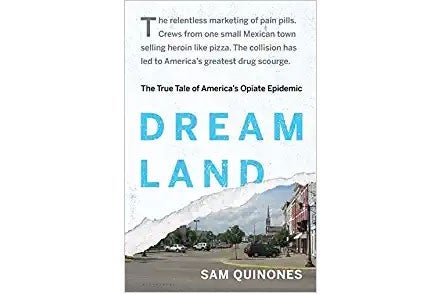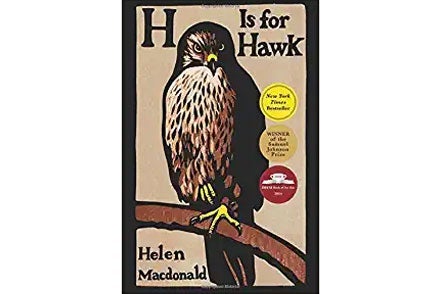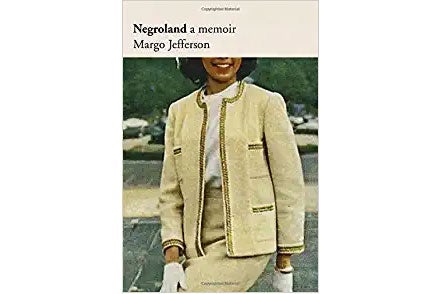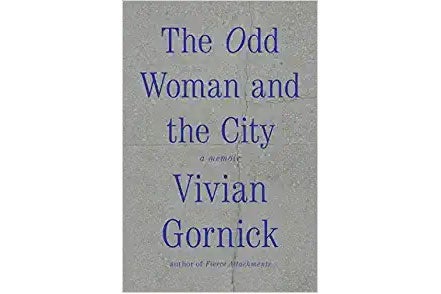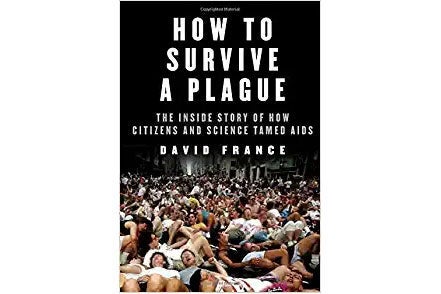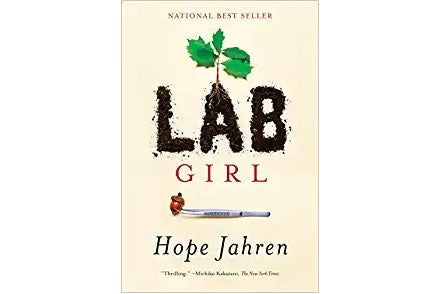“As a writer, I prefer to get bossed around by my notebook and the facts therein,” David Carr wrote in his reported memoir The Night of the Gun, one of Slate’s 50 best nonfiction books of the past 25 years. Carr was mulling over the difference between fiction and nonfiction, the novelist’s art and the reporter’s craft. “They may not lead to a perfect, seamless arc, but they lead to a story that coheres in another way, because it is mostly true.”
In the work of canon-building, nonfiction tends to get short shrift. While memoir has gained a foothold in the literary conversation, narrative and reported nonfiction tend to be ignored. It can be easy to dismiss these forms as the worthwhile but fundamentally unliterary assemblage of facts into paragraphs. Yet what reader hasn’t had her mind expanded, her heart plucked, her conscience stirred by a nonfiction book? The responsibility the writers of such books take on, to arrange the facts of the world into a form that makes sense of its tumult, can produce in the reader a kind of clarity of thought that no other genre can match.
Slate’s list of the definitive nonfiction books written in English in the past quarter-century includes beautifully written memoirs but also books of reportage, collections of essays, travelogues, works of cultural criticism, passionate arguments, even a compendium of household tips. What they all share is a commitment to “mostly truth” and the belief that digging deep to find a real story—whether it’s located in your memory, on dusty archive shelves, in Russian literature, in a slum in Mumbai—is a task worth undertaking.
Slate has relationships with various online retailers. If you buy something through our links, Slate may earn an affiliate commission. We update links when possible, but note that deals can expire and all prices are subject to change. All prices were up to date at the time of publication.
Mr. Wilson’s Cabinet of Wonder: Pronged Ants, Horned Humans, Mice on Toast, and Other Marvels of Jurassic Technology by Lawrence Weschler (Pantheon, 1995)
“What kind of place is this exactly?” Lawrence Weschler asks the proprietor of the oddball Los Angeles storefront museum he stumbles into one day, where the exhibits are surprising, whimsical, and in fact often (but not always!) entirely made up. In Mr. Wilson’s Cabinet of Wonder, Weschler spins the story of the Museum of Jurassic Technology’s unlikely creation into an entirely winning meditation on human ingenuity and creativity, a thought experiment about how the mind responds to being amazed. The result is a deceptively simple book that—like the 16th-century “wonder cabinets” that, Weschler explains, served as the very first museums—opens to reveal astonishments untold.
Into the Wild by Jon Krakauer (Villard, 1996)
In April 1992, Christopher McCandless, a young man in search of wild, untrammeled experience, hiked into the Alaskan wilderness. Four months later, his body was found by a moose hunter. Krakauer sets out to unravel the mystery of how this adventure ended in tragedy, and the tiny mistakes that cost McCandless his life, by reading McCandless’ journals, talking to his friends, and traveling to the abandoned bus where McCandless spent his last months. Through his reporting of McCandless’ passionate and foolhardy journey into transcendence—and writing about his own, similar youthful experiences—Krakauer explores our modern relationship to the wilderness and the deep desire many young people feel to seek out unthinkable danger.
Madeleine’s World: A Biography of a Three-Year-Old by Brian Hall (Houghton Mifflin, 1997)
Hall’s quixotic premise—to write a detailed biography of his own daughter, Madeleine, from infancy through toddlerhood to small-kidness—works only because Hall is such a curious observer and imaginative interpreter of his subject. That subject is, of course, Madeleine but also childhood, the period of almost incomprehensible development between zero and 3, the simultaneous flowerings of action, reason, and self-awareness. Even nonparents will be fascinated by Madeleine’s World for the ways it delves deep into the thought patterns and imaginative leaps readers half-remember from their own childhoods; for parents, the book—in its insistence that to pay attention is to love—can be almost unbearably moving.
The Spirit Catches You and You Fall Down: A Hmong Child, Her American Doctors, and the Collision of Two Cultures by Anne Fadiman (Farrar, Straus and Giroux, 1997)
This deeply researched, profoundly empathetic story of cultural miscommunication in medicine focuses on the case of Lia Lee, the doted-on youngest daughter in a family of Hmong refugees in rural Northern California. Lia had an unusual and severe form of epilepsy. Doctors at the American hospital where her family sought treatment prescribed an elaborate drug regimen to control her seizures. Her family, on the other hand, believed the doctors’ recommendations made the child sicker and failed to address what they saw as the cause of her illness: spirits that had kidnapped her soul and needed to be placated with animal sacrifices. Fadiman shows great respect for the Hmongs and their culture, devoting alternate chapters to their beliefs and history, without ever pretending that their folk cures did Lia any good. It’s Fadiman’s commitment to sympathetically depicting both sides without ceding all judgment entirely that makes this case study so impressive. Both sides were united in their devotion to the little girl’s welfare, and Fadiman ultimately argues that if the physicians had been more willing to better understand the Hmong people and engage with Lia’s parents and their beliefs, they might have saved Lia from her sad fate.
A Supposedly Fun Thing I’ll Never Do Again: Essays and Arguments by David Foster Wallace (Little, Brown, 1997)
Although he’s now best known for his 1996 novel, Infinite Jest, Wallace made his reputation, particularly among younger readers in the late ’90s, as an essayist and a very particular sort of journalist. His editors at Harper’s sent him to a state fair and on a holiday cruise, pastimes whose reputations for carefree, middle American fun seemed hopelessly alien to Wallace himself, a hyperactive observational machine desperate to shed his own self-consciousness but incapable of doing so. The results, included in this collection of essays, were hilarious and revelatory; who knew it was even possible to write that way, to acknowledge how difficult it is for a certain kind of media-soaked mind to stop making associations and references, to forget itself? In these pieces, Wallace makes himself—and his doomed attempts to fit in and have a kind of fun he doesn’t really believe in—the butt of the joke, and a very funny joke it is (although less so in light of his suicide in 2008). This collection also includes some top-notch writing on tennis, and Wallace’s still-relevant essay on television and fiction, “E Unibus Pluram,” but the cruise ship and state fair pieces still shine the brightest.
A Supposedly Fun Thing I’ll Never Do Again
By David Foster Wallace
Out of Sheer Rage: Wrestling With D.H. Lawrence by Geoff Dyer (North Point Press, 1998)
Surely the funniest book ever written about writer’s block, this “study” of D.H. Lawrence, a favorite author of Dyer’s, is more travelogue and memoir than the “sober, academic” work the author originally set out to pen. Pinging from Paris to Rome to Greece to Taos, New Mexico, Dyer makes literary pilgrimages that result in no epiphanies. One place is too hot to get anything done; another is too beautiful. One is too cacophonous; another is too tranquil. He comically works on a novel to avoid his Lawrence book when he’s not working on the Lawrence book to avoid his novel. (“At first I’d had an overwhelming urge to write both books but these two desires had worn each other down to the point where I had no urge to write either.”) His ennui is operatic and ridiculous. And yet, through the cracks between Dyer’s torpor and his dissatisfaction, a tribute to Lawrence—that great proponent of passionate living—finally emerges. Lawrence knew well the paradox at the center of a writer’s life, which is that life is the subject of writing and yet writing is not living; the two cancel each other out. The only sensible response to this absurd dilemma is laughter, and Dyer’s readers will enjoy plenty of that.
The Tennis Partner: A Doctor’s Story of Friendship and Loss by Abraham Verghese (HarperCollins, 1998)
Abraham Verghese was a doctor at a teaching hospital in El Paso, Texas, when he met medical student David Smith, a burned-out ex–tennis pro from Australia. The Tennis Partner is, in part, the story of the friendship that grew between the two men as they interact at work and on the tennis court, with Verghese encouraging Smith to rekindle his love of the game and Smith counseling Verghese through the difficult end of his marriage. If it were only a closely observed, intimate portrait of a close and meaningful friendship, the book would already be an enormous success. But Smith, an addict in recovery, falls back into drug use, and the final third of the book is both a suspenseful portrait of a doctor trying to save a life and a moving meditation on the limits of what friends can do when facing the monster of addiction. Carrying us through it all is Verghese’s voice: empathetic, rueful, honest to a fault, and always kind.
We Wish to Inform You That Tomorrow We Will Be Killed With Our Families: Stories From Rwanda by Philip Gourevitch (Farrar, Straus and Giroux, 1998)
Media reports during the genocidal 1994 massacres in Rwanda were spotty and confusing. Gourevitch, a journalist, was determined to understand how a country united by a single language and religion could become so divided that one part of its population would suddenly turn on the other, killing a million of their fellow citizens, including their own neighbors. He traveled in the African nation for nine months, visiting sites of slaughter, interviewing war criminals in prison camps, gathering the stories of those who escaped by the skin of their teeth. But We Wish to Inform You is more than a masterpiece of war reportage. Gourevitch digs down to the roots of the genocide, locating them in the leftover resentments fostered by colonialism and a civil war. Above all, he blames the schemes of the ruling Hutu elite, who deliberately engineered the massacre by using radio, Rwanda’s primary means of mass communication, to foment murderous hatred among Hutus toward the Tutsi minority. This plan went unhampered by international intervention, even after Western leaders became aware of the atrocities being perpetrated. Although beautifully written, this book is not easy to read, but the insights Gourevitch arrives at are more essential than ever.
Home Comforts: The Art and Science of Keeping House by Cheryl Mendelson (Scribner, 1999)
Beautifully written and nearly deranged in its comprehensiveness, Home Comforts holds what seems an entire culture’s collected wisdom on fabric selection, lighting design, clothes folding, waste disposal, dishwashing, food storage, table setting, closet organization, and piano tuning. Mendelson’s irreplaceable guide to stain removal spans four pages, from adhesive tape to crayon to mustard all the way to urine. But this isn’t just a handbook; above all, Home Comforts is animated by Mendelson’s respect and affection for the duties and pleasures of housekeeping. Every one of its 884 pages is an absolute joy to read, and no book is more deeply comforting to neat freaks—or inspirational to slobs.
The Battle for God by Karen Armstrong (Knopf, 2000)
After 9/11, Armstrong, a former nun turned popular historian of religion, seemed like some kind of prophet: She had published her history of fundamentalism, The Battle for God, the preceding year. Readers turned to her in droves, trying to understand what felt like a sudden, unanticipated, overwhelming menace. As a result, Armstrong’s take on fundamentalism has shaped our understanding of the phenomenon more than perhaps any other thinker’s. Fortunately, hers is an insightful analysis, identifying the similarities among fundamentalists of all three major monotheistic religions: Christianity, Judaism, and Islam. Most importantly, she recognizes that all forms of fundamentalism are reactions to the dislocation and confusion of modernity even as fundamentalists embrace modern tools like mass and social media. Lucid, wide-ranging, and persuasive, The Battle for God provides a framework for understanding more than the three religions it focuses on. It only becomes more relevant with every year.
A Heartbreaking Work of Staggering Genius by Dave Eggers (Simon & Schuster, 2000)
If you were a semifeckless, amply flawed but eminently clever twentysomething Gen Xer at the turn of the 21st century, and you were writing a memoir about how your parents died within five months of each other when you were a senior in college, leaving you to care for your 8-year-old brother, you faced a choice. You could present your story with purported sincerity (as pretty much anyone in their late 20s would do today). Or, if you were painfully aware that so much of what fronts as sincere is in fact ungenuine or calculating sentimentality and otherwise bogus, you could come up with a new style. It would need to be a style that insisted on scrutinizing and mocking and apologizing for itself, that veered vertiginously between the playful and the stark. Eggers, of course, chose the latter, producing a book that was hugely influential—that still is hugely influential, to judge by, among other things, the prevalence of a certain exclamation mark–bedazzled school of journalism. Eggers himself was inspired by David Foster Wallace, but unlike Wallace, Eggers was able to hack his way out of the thickets of self-consciousness, or maybe it was even further into them, and arrive at a rock, a kernel of reality, which was his love for, and commitment to, his brother Toph. He left a pretty good path behind him, too.
Borrowed Finery: A Memoir by Paula Fox (Henry Holt, 2001)
It’s true that Fox’s memoir of the first 20 or so years of her life was published during a boom in autobiographies about awful childhoods, and Fox’s Jazz Age–style bohemian parents were … difficult. They abandoned her to assorted relatives, friends, and strangers for years at a time, bouncing her from an elderly minister’s house in upstate New York to a Floridian resort, a Los Angeles apartment, a Cuban sugar plantation, and a fancy Montréal boarding school. Her charming, mercurial father drank too much and broke promises, while her mother simply rejected her. But Fox clearly has no interest in crafting a tale of woe. Instead, Borrowed Finery is a kind of transcription of memory in its strange spottiness. It comes in pieces, a recording of those incidents, big and small, that are for whatever reason lit up as if by spotlights when we cast our minds back over the great, dark stretches of the past. This memoir is less a narrative than a collage of mysteriously potent moments: a favorite teacher’s kitchen, a dead puppy, a new dress. Best of all is Fox’s prose style—unostentatiously simple, lucid, distilled down to quintessential detail—as close to perfection as the English language gets.
American Ground: Unbuilding the World Trade Center by William Langewiesche (North Point Press, 2002)
“The buildings were not buildings anymore, and the place where they fell had become a blank slate,” William Langewiesche writes of ground zero, the site of the World Trade Center towers’ destruction on Sept. 11. “Among the ruins now, an unscripted experiment in American life had gotten underway.” Langewiesche had nine months of unfettered access to every meeting, decision, and subterranean hellhole at ground zero, which resulted in this astonishingly detailed and deeply emotional look at the labor of thousands of city employees, engineers, and construction workers as they cleaned up the burning, toxic, dangerous wreckage of Lower Manhattan. American Ground is an inspiring portrait of American ingenuity when faced with an impossible task and a gripping exploration of the American psyche in the aftermath of a great shift in the world order.
Random Family: Love, Drugs, Trouble, and Coming of Age in the Bronx by Adrian Nicole LeBlanc (Scribner, 2003)
Adrian Nicole LeBlanc spent 10 years reporting on a group of young men and women in the west Bronx as they paired off, grew up, escaped, returned, and tried to raise children of their own. Written with a moment-to-moment emotional intensity that drops the reader into the hearts of Jessica, Coco, Lourdes, Mercedes, and Foxy, Random Family crackles with immediacy. Brilliantly observant of the social codes and structures that rule the communities it portrays, the book reads like a Jane Austen novel, its heroines constricted by circumstance as well as their own personalities. The most moving moments of this work of deep reportage come when its women find brief moments of peace in good relationships, in family, in jobs they enjoy; but always trouble waits around the corner, to “break open like a burst of billiard balls.”
Can’t Stop Won’t Stop: A History of the Hip-Hop Generation by Jeff Chang (St. Martin’s Press, 2005)
A sweeping cultural history of the dominant American art form of the past 50 years, Can’t Stop Won’t Stop traces hip-hop back to its birth in the South Bronx and then back even further, to the Jamaican toasters whose style inspired New York’s first rappers. Chang fills his book with the names and stories of the kind of small-time heroes whose creativity and inspiration get overlooked in so many cultural narratives: the party promoters whose DIY bashes in dingy apartments drew crowds and DJs, the dance crews who drove the community’s passion for this new music, the graffiti artists who brought street style downtown. But he also highlights the stars, from Kool Herc to Rakim to Ice Cube, who innovated and popularized the form for an audience beyond those DIY parties. And in his propulsive, idiosyncratic style, Chang situates the revolution in the political and social context of 20th-century New York (and America): deeply racist, economically cruel, and ready to explode.
Fun Home: A Family Tragicomic by Alison Bechdel (Houghton Mifflin, 2006)
In this moving memoir-as-investigation of her own father’s hidden life, Alison Bechdel combines the skills of an experienced cartoonist—expressive drawing, concise storytelling, mordant humor—with the ingenuity and curiosity of a reporter. Starting with her own journals, Bechdel uncovers dark treasures of her childhood and adolescence as the daughter of a closeted funeral home director in small town Pennsylvania; her clever narrative structure returns to crucial moments again and again, polishing them and holding them up to the light to reveal new facets of meaning. Young Alison and her dandyish father were inversions of each other: “While I was trying to compensate for something unmanly in him,” she writes, “he was attempting to express something feminine through me.” This understated yet beautiful book, an attempt to puzzle out his life and death, thrillingly animates and embodies their relationship.
The World Without Us by Alan Weisman (Thomas Dunne Books, 2007)
We are a culture intoxicated by apocalypse and ruin, forever telling one another stories about what we’d do to survive should civilization as we know it collapse. But what if humanity itself went poof and left behind the entire apparatus of our existence without a single soul remaining to start over? That is the irresistible premise of Weisman’s book, a thought experiment substantiated by deep research into what it takes to keep the built world functioning and what has happened in the few places (Chernobyl, the Korean Demilitarized Zone) where there has been no one around to prop it up. Weisman, a science journalist, projects a week-by-week progression of flooding subway tunnels, farms reclaimed by grassland, toppling skyscrapers, domestic animals reverting to their feral state, and, less romantically, nuclear reactors melting down, chemical plants exploding into poisonous bonfires, and a vast mass of discarded plastics drifting around the world’s oceans for ages to come. The planet would eventually recover, he assures his readers—if “assure” is even the right word: The air would clear, the waters sweeten, and the animals, birds, and insects would take up residence in our old haunts. It’s a scenario both beautiful and terrifying, the original definition of the sublime, and executed with a methodical bravado that’s breathtaking.
The Night of the Gun: A Reporter Investigates the Darkest Story of His Life. His Own. by David Carr (Simon & Schuster, 2008)
In 2008, David Carr had been a respected New York Timesman for years, the paper’s media reporter and a beloved mentor of countless young journalists. But two decades before that, Carr was a junkie—a crack addict who washed out of journalism jobs, who was rung up by the Minneapolis cops nine times, and whose twin daughters were born 2½ months premature to a mother who’d smoked crack the night before their delivery. For The Night of the Gun, Carr applied his reporter’s eye to his own story, digging into those lost years and uncovering painful and frightening truths about the man he was while in the throes of addiction. Released into a post–James Frey, post–JT LeRoy era when skeptics found memoir increasingly unreliable, Carr’s live-wire combination of autobiography and journalism explores not only the secrets of his own life but also the ways in which the stories we all tell ourselves evolve into the versions we can live with. The Night of the Gun makes plain how hard, and how necessary, it is to face the past with diligence and humility.
The Age of Wonder: How the Romantic Generation Discovered the Beauty and Terror of Science by Richard Holmes (Pantheon, 2009)
Holmes is our greatest living biographer. Whether he’s recounting Percy Shelley’s rebelliousness, Samuel Coleridge’s descent into opium addiction (Holmes specializes in the Romantic poets), or his own penchant for walking along the paths and roads his subjects once tread, everything he writes is a positive delight to read—charming, unostentatiously erudite, moving. In this unusual work, he considers several British scientists and explorers as the 18th century gave way to the 19th. Far from soberly rational, these thinkers were as galvanized by the exhilarating spirit of their times as the poets Holmes usually writes about. William Herschel, who identified the first new planet in centuries; Humphry Davy, who invented electrochemistry and experimented with nitrous oxide; Mungo Park, who searched for Timbuktu; and others were as much adventurers of the imagination as any artist, Holmes insists. Coleridge (the subject of a two-volume Holmes biography and a friend of Davy’s) declared science to be driven by “the passion of Hope” and a vision of transforming the world for the better. Holmes urges his readers to understand that at one time poetry and science stood with linked arms upon the peak of discovery and looked at each other with “a wild surmise” like Cortez and his men in Keats’ sonnet. Here is a book capable of flooding a reader with the same sense of astonishment.
Columbine by Dave Cullen (Twelve, 2009)
The 1999 slaying of 13 people at Columbine High School in Colorado was, as Cullen notes in this definitive account of the tragedy, “the first major hostage standoff of the cellphone age.” As Eric Harris and Dylan Klebold, heavily armed, still roamed the hallways of the building, the media, desperate for any information, began to spin a tale of the Trenchcoat Mafia and disaffected goths lashing out at the jocks who’d bullied them. Students hiding from the shooters saw these reports on classroom TVs and echoed them back via their mobile phones. A mythos grew up around the school shooting, the deadliest up to that point, almost entirely fictional, and much of it difficult to dispel. Harris, Cullen concludes, was merely an angry psychopath, and Klebold, his suicidal apostle, but in the aftermath, everyone from onetime adolescent misfits to evangelicals with martyr complexes twisted this bald reality into a story that confirmed their views of the world. Cullen, who was on the scene himself within 15 hours of the crime, spent 10 years teasing out the legends from the truth. The result is an extraordinary work of reportage, a revelation, not just of the shootings themselves but of the myriad misbegotten attempts to find meaning in them.
The Lost City of Z: A Tale of Deadly Obsession in the Amazon by David Grann (Doubleday, 2009)
Percy Fawcett was the last of the great white explorers, a dashing Brit who, in the first decades of the 20th century, became obsessed with a fabled ancient civilization deep within the Amazon jungle. For years, Fawcett hunted for his “lost city of Z,” even as he was betrayed by collaborators, weakened by hunger, and attacked by poisonous ants and carnivorous fish. Z finally cost Fawcett his life, along with that of his son, when they both disappeared on a 1925 search. Grann—“nearly 40 years old, with a blossoming waistline”—resolves to tell Fawcett’s story and soon finds himself stuck in the jungle himself, captured, absurdly, by the same lust for discovery that killed his subject. A signal work of narrative nonfiction that both celebrates and satirizes the time-honored tale of the adventurer attacking the wilderness with “little more than a machete, a compass and an almost divine sense of purpose.”
Finishing the Hat: Collected Lyrics (1954–1981) and Look, I Made a Hat: Collected Lyrics (1981–2011) by Stephen Sondheim (Knopf, 2010–11)
Plenty of writers have collected their life’s work into two volumes and assessed it, but no one has done so with as much wit, ruthless honesty, and good humor as Stephen Sondheim, which makes sense, because few writers’ work matches Sondheim’s in those exact qualities. Crucially, these collected lyrics aren’t an exercise in self-gratification; Sondheim is insightful and unsparing about his own mistakes, even the ones that only he is smart enough to see. Take, for example, his notes on the perfectly lovely Company song “The Little Things You Do Together”: He bemoans the song’s glibness, calls its tight rhyme schemes “as tiresome as they are elaborate,” and mourns a quatrain he replaced with one he now sees as worse. The result is a pocket history of the past half-century of musical theater, a crash course in the collaborative creative process, and a bottomless craft lecture for anyone who aspires to make something beautiful.
The Immortal Life of Henrietta Lacks by Rebecca Skloot (Crown, 2010)
In 1951, a 30-year-old black woman was diagnosed with cervical cancer at Johns Hopkins Hospital in Baltimore. The cells biopsied from Henrietta Lacks’ tumor, dubbed HeLa cells, soon became the basis for decades of crucial medical research: The polio vaccine, IVF techniques, and advancements in gene mapping all owe their success to the HeLa cells taken from Lacks’ body. Skloot’s impeccably reported book tells a remarkable story of scientific development but also makes an impassioned argument about the way medicine has always used black and poor bodies. In the process of reporting the book, Skloot befriended Lacks’ descendants. Rather than harming the author’s “objectivity,” these friendships transform what was already a very good science book into a deeply humane and crucial interrogation of how technological progress churns along, indifferent to the lives fueling its course.
The Master Switch: The Rise and Fall of Information Empires by Tim Wu (Knopf, 2010)
It seems obvious today that the internet would trend toward the consolidation of power in the hands of a few major players, but nearly 10 years ago, Wu raised hackles when he argued that all information industries move from openness to concentration unless outside forces intervene. In this book, he follows the histories of telephony, radio, movies, and television, observing that early periods of innovation and access for small, nimble players (such as local telephone companies) always yielded to centralized control. Hollywood tycoons in particular sought to bring every aspect of moviemaking, from the talent to the theaters, under their sway, and only government action succeeded in breaking their stranglehold. The fantasy that the internet’s distributed structure (it has no “master switch”) would keep it forever free of monopolies was a point of faith among the medium’s early adopters, and the intervening years have only underlined how prophetic Wu was in identifying their mistake. He did get some things wrong—social media was a fledgling force at the time, and Google then seemed an admirably open gateway to content compared with Apple—but the stories of those other industries remain a potent warning about the fate of any crucial communications medium in a society that fails to protect itself.
The New Jim Crow: Mass Incarceration in the Age of Colorblindness by Michelle Alexander (The New Press, 2010)
Alexander was an academic specializing in civil rights when, in the early 2000s, she walked past a protest sign condemning the War on Drugs as the “new Jim Crow.” Her first impulse was to shrug off this claim as conspiracy theory and to go back to what most of her middle-class black friends and colleagues considered their top priority: protecting affirmative action. But over the years, Alexander’s work as a lawyer for the ACLU ultimately led her to agree with the sign’s author. Far from being “just another institution infected with racial bias,” she argues, the criminal justice system, and particularly its drug laws, has replicated the effect of Jim Crow laws, reinforcing a racial caste system in which large numbers of poor black men have been barred from anything better than the most menial employment and from equal participation in civic life. Riveting to read, The New Jim Crow became a surprise bestseller, and it transformed forever the way thinkers and activists view the phenomenon of mass incarceration.
The Possessed: Adventures With Russian Books and the People Who Read Them by Elif Batuman (Farrar, Straus and Giroux, 2010)
What Batuman, a staff writer for the New Yorker, loves most about Russian literature, and about Russianness itself, are what she calls its “mystifications,” specifically, “the feeling of only half understanding.” In this delectable collection of essays, she describes her travels to such perplexing locales as Tolstoy’s former estate, Uzbekistan, a monastery on an Adriatic island, and graduate school. Hers is a lifelong quest for the grandiose, the melancholic, and—crucially—the absurd. Batuman seems to attract Borgesian peculiarity like a magnet. She journeys to Samarkand to study a language of dubious authenticity, in which one of the few remaining written texts takes the form of love letters between the colors red and green. When Aeroflot loses her luggage, the clerk asks her, “Are you familiar with our Russian phrase, resignation of the soul?” She gets talked into judging a boys’ “leg contest” at a Hungarian summer camp. And while most academic conferences are pretty dull, she attends one in which an old lady turned to another guest and demanded, “I would like to know if it is TRUE THAT YOU DESPISE ME.” When it comes to eccentricity, Batuman holds up her end—her Ph.D. dissertation compared novels to double-entry bookkeeping, and she talked her way into a Tolstoy conference by proposing a paper arguing that the novelist was murdered. While The Possessed is unlikely to enhance readers’ understanding of Dostoevsky, by the end they’ll be having so much fun they won’t care.
Travels in Siberia by Ian Frazier (Farrar, Straus and Giroux, 2010)
A kind of capstone to a career spent visiting seemingly empty landscapes and finding the warm hearts that beat inside them, Travels in Siberia exhibits all of Ian Frazier’s remarkable travel-writing talents. He is deeply curious about everything and everyone he meets. He is patient and observant. He is a well-read, brilliant contextualizer. He effortlessly brings the past to the present and makes connections between person and place, history and destiny. And he’s funny as hell, one of the funniest writers alive. ’Til the day that you die you will remember with squirming laughter Frazier’s descriptions of the nightmarish mosquitoes of Western Siberia, which “came at us as if shot from a fire hose”: “There are the majority, of course, who just bite you anywhere. Those are your general practitioner mosquitoes, or GPs. Then you have your specialists—your eye, ear, nose, and throat mosquitoes.”
The Warmth of Other Suns: The Epic Story of America’s Great Migration by Isabel Wilkerson (Random House, 2010)
At once intimate and sweeping, Wilkerson’s history offers a landmark account of one of the epochal changes in American society: The movement, over six decades, of approximately 6 million black citizens from the South to the Midwest, West, and Northeast. Many of these transplants behaved, as Wilkerson notes, more like refugees than anything else, fleeing Jim Crow laws to form enclaves united by their ties to the towns they’d left behind. (Detaching from the South, one of her sources told her, was like “getting unstuck from a magnet.”) Wilkerson pulls in the book’s focus by following the lives of three individuals: a sharecropper’s wife, a labor organizer, and a doctor who would go on to count Ray Charles among his patients. Although each migrated at a different time for different reasons, their stories share the common thread of flight from Southern society’s pervasive, cruel, and dehumanizing racism. What these hopeful travelers found once they left was often exploitative, but the slight advantages they discovered under those other suns became the springboards for that most American of dreams: a better life.
Harlem Is Nowhere: A Journey to the Mecca of Black America by Sharifa Rhodes-Pitts (Little, Brown, 2011)
Dreamy, meandering, and ravishing, Rhodes-Pitts’ ode to Harlem summons up the ghosts of the “Mecca of Black America.” As a Texas-born pilgrim to this vexed promised land, she found herself drawn not to the obvious inspirational sites, such as Langston Hughes’ house, but to the remnants of Harlemites past who have been overlooked or half-forgotten: a literary scrapbooker named Alexander Gumby, a photographer specializing in portraits of the dead, the operator of a wax museum. A neighborhood is defined by its eccentrics, and Rhodes-Pitts seeks them out, chatting with old ladies, searching for the author of inspirational messages chalked on the sidewalks, subjecting herself to the lectures of one of the last members of a nearly extinct black nationalist movement. She matches up archival photos of vacant lots and storefronts with the new, gentrifying constructions erupting in their place. Harlem Is Nowhere is a work less of history than of mood, a delicate phantasm, evocative of the aspirations and losses of a remarkable place and all the people who have made it their sanctuary and their home.
The Information: A History, a Theory, a Flood by James Gleick (Pantheon, 2011)
To say Gleick’s history of information and communication is wide-ranging is a bit of an understatement. According to Gleick, we are all “creatures of the information,” from the words that make up most of our interactions with one another to the code embedded in our DNA. This book constellates around Claude Shannon, a Bell Labs mathematician and cryptographer who founded information theory with a 1948 paper considering how to measure what it takes to transmit a message from a sender to a recipient—even if that recipient is just a subatomic particle on the other side of the universe wondering which way to spin. Human beings are some of the universe’s most energetic signal transmitters, and when Gleick isn’t explaining information’s relevance to Brownian motion and Gödel’s incompleteness theorem, he’s deep in the more engaging stories of African talking drums, Ada Lovelace’s nascent computer programs, and how the telegram changed the world. Information is not the same thing as knowledge, however, and it is knowledge that this book imparts in great, glorious fistfuls, as it loops through time and space, shedding brilliant light on first one corner of experience, then another. Its breadth and grasp are dazzling.
Behind the Beautiful Forevers: Life, Death, and Hope in a Mumbai Undercity by Katherine Boo (Random House, 2012)
The product of more than three years of in-depth reporting in a slum near Mumbai airport called Annawadi, Katherine Boo’s masterpiece is a Kafka story for our times, the tale of determined strivers so hemmed in by circumstance, official disregard, and rampant corruption that even those who succeed are punished for their accomplishments. In its portrait of the garbage-sorter Abdul, who winds up in court after a false accusation from a neighbor, Behind the Beautiful Forevers depicts a young man who loses everything he’s earned and comes out on the other side declaring that “something had happened to his heart.” His painful moral decision-making reflects a book in which Boo is always careful to portray the ways her subjects exert agency within their own lives, even at the cost of their health and safety. A propulsive, dramatic, heartbreaking book.
Far From the Tree: Parents, Children, and the Search for Identity by Andrew Solomon (Scribner, 2012)
Having interviewed more than 300 people over the course of 10 years, Solomon explores the experience of parenting a child fundamentally different from oneself. The children of these parents are, as Solomon recounts, “deaf or dwarfs; they have Down syndrome, autism, schizophrenia or multiple severe disabilities; they are prodigies; they are people conceived in rape or who commit crimes; they are transgender.” Far From the Tree is mammoth, but its oceanic scope is essential to convey the infinite variety in humanity’s ability to cope with the differences among us. As the collator of all this material, Solomon makes his own emotional and intellectual growth one of the book’s themes, as he describes how his subjects helped him shed the blinders he once wore. At the heart of this extraordinary project is the mystery of what makes a group of people a family. Blood, it turns out, is not always enough, but neither are many other commonalities in identity. Building true kinship starts as a choice and then often comes to seem inevitable, an act of will in the face of daunting odds that ends up feeling like a miracle.
The Old Ways: A Journey on Foot by Robert Macfarlane (Viking, 2012)
Macfarlane cares passionately about two things: landscape and language. This vividly sensuous account of several walking tours, plus a respectable bout of sailing, describes his experiences with ancient routes, most created by peoples whose names have been lost to time, but whose imprint on Earth lives on thanks to the countless feet that have followed them. He argues that similar age-old paths crisscross the sea, remembered by sailors even if they leave no visual trace. Macfarlane’s desire to more fully experience the places he visits—mostly in Britain but also in Spain and Tibet—is so keen he takes off his shoes to feel the rock, grass, heather, and (in one painful incident) gorse under his feet. His travels aren’t without human interest, either; they always seem to include meetings with fascinating poets and artists, like a man who plans to suspend a life-size figure made of human bones and calf skin inside a boulder whose location only a handful of people will ever know. Like all of Macfarlane’s work, this book is a charm against the streamlined, the global, the generically virtual. It is a paean to the irreducible reality of stone and leaf and wave.
People Who Eat Darkness: The True Story of a Young Woman Who Vanished From the Streets of Tokyo—and the Evil That Swallowed Her Up by Richard Lloyd Parry (Farrar, Straus and Giroux, 2012)
The secret of a great true crime book is not how the author writes about the crime, but how skillfully he articulates the effect it has on the survivors and the secrets it betrays about the society that let it happen. Parry, Tokyo bureau chief for the Times of London, covered the story of the murder of Lucie Blackman, a 21-year-old former flight attendant who disappeared while working as a hostess in the city’s Roppongi district. Her body was found in a cave seven months later. Parry offers a devastating portrait of the inadequacies of Japan’s criminal justice system, as it struggled to comprehend that a serial killer was responsible. Eventually, the son of a Korean-Japanese businessman was convicted, absurdly, of abducting and dismembering Blackman but not of killing her. Blackman’s warring divorced parents play major roles in Parry’s account, from the father who kept the search for Lucie going to the embittered mother, who could not resist the opportunity to strike back at her ex. The killer himself is an impenetrable cipher, but Parry portrays the people whose lives he devastated in all their complexity: heroic, flawed, stricken, and ultimately sympathetic.
Going Clear: Scientology, Hollywood, and the Prison of Belief by Lawrence Wright (Knopf, 2013)
This book might just be the perfect exposé: a consummate journalist writing about an outrageously malfeasant subject and raising urgent themes. Wright fell down this particular rabbit hole after writing for the New Yorker about the Church of Scientology’s wooing of celebrities, and he came in for some tweaking over the extremely measured tone he employs while recounting the shenanigans of the religion’s founder, science-fiction author L. Ron Hubbard, and the even-worse behavior of his successor, David Miscavige. But Wright’s refusal to rant and rave—even when presented with countless examples of church skullduggery, mendacity, and brutality, not to mention the sheer, flagrant kookiness—turns out to be his secret weapon. Making every effort to be fair, allowing for the bad press and outright repression that often greets new religions, Wright assembles a wall of proof, brick by damning, implacable brick. It doesn’t hurt that Scientology’s story is both utterly bizarre—including a prison camp in Southern California, a seagoing headquarters designed to evade the IRS and other authorities, and campaigns to induce mental illness in church critics—and a case study in American self-help hucksterism.
Lost Girls: An Unsolved American Mystery by Robert Kolker (Harper, 2013)
At least four and possibly as many as 14 murders have been attributed to a still-unknown individual who dumped his victims’ remains along a desolate beachside highway on Long Island. For most true-crime writers, the lack of an identified killer would make this book a nonstarter, but Kolker, who has covered the investigation for New York magazine for several years, turns that liability into a strength. As Kolker tells the story of how more than a dozen young women drifted to the margins of society and became vulnerable to one or more predators, he does justice to the painful complexity of these women’s family lives, their talents and dreams, their battles with substance abuse and sexual violence, and their fraught relationships with their mothers, as well as the friends and relatives who fought to keep their memories alive and the search for their killer going. The unifying features of all their stories are class, poverty, and the economic temptations of sex work. Another is that the authorities did not take their disappearances seriously until four of them were found buried in the same place. Kolker, who has an uncanny ability to play fly on the wall, catches members of the police and the media dismissing the victims; it was only the possibility of a serial killer that made them count. Kolker refuses to let their murderer define them.
The Trip to Echo Spring: On Writers and Drinking by Olivia Laing (Picador, 2013)
Not all great American writers have been big drinkers, but there are enough souses among them for Laing, a British woman intoxicated by the wide-open promises of our national literature, to engineer a road trip around their boozy misadventures. Although not an alcoholic herself, Laing grew up in a family warped by her mother’s partner’s drinking, and that story weaves through her account of her travels to the places where six men—John Cheever, F. Scott Fitzgerald, Ernest Hemingway, Tennessee Williams, Raymond Carver, and John Berryman—wrote, got hammered, and dried out. Laing’s readings of their work are extraordinarily sharp and sensitive, and her description of the places she visited and what happened to her there may be even better. (A bald eagle in flight looks like “a coat thrown into the air, ragged and enormous.”) But the true subject of this gorgeously sorrowful book is the drive toward self-destruction, and what it means to live close to a person who can’t resist its siren call.
The Unwinding: An Inner History of the New America by George Packer (Farrar, Straus and Giroux, 2013)
This choral account of American life over the past 35 years is told from the points of view of famous individuals (Newt Gingrich, Elizabeth Warren, Colin Powell, Alice Waters) and unknowns (a black labor organizer, a would-be entrepreneur high on self-help nostrums, an Ohio woman who lost her retirement savings to a Ponzi scheme, and in one bravura chapter, the city of Tampa as it underwent a cascade of mortgage foreclosures following the 2008 recession). Packer strives to transmit each subject’s narrative without editorializing or moralizing, an approach that feels radical a mere six years after the book’s publication, since today the imperative to opine never seems to let up. As a result, The Unwinding is almost disorienting, like coming inside after a day spent walking into a stiff wind. But once you get used to it, Packer’s approach opens up the space to contemplate how these different people experience and respond to their sense that America is coming apart. The few exceptions practically glow with significance, from the tightknit family of poor Floridians who struggled with one setback after another but always had one another’s backs to the owner of a handful of empty motels, who chose to fight the automated foreclosure system with the help of her community and clan. “Usha Patel was not a native-born American,” Packer writes in a typically astute (if atypically subjective) sentence, “which is to say, she wasn’t alone.”
Wave by Sonali Deraniyagala (Knopf, 2013)
Deraniyagala, an economist at the University of London and Columbia University, was vacationing with her family in Sri Lanka in 2004, when she looked out the window and saw the ocean rise up and rush toward the balcony of their holiday rental. By the end of the day, Deraniyagala had lost her parents, her husband, and their two young sons to the Boxing Day Tsunami. It is the kind of devastation that might seem beyond words, and yet Deraniyagala finds them; she is, it turns out, a very gifted writer. Most of Wave describes the aftermath of the tragedy. It is an account of grief that refuses to turn away from ugliness or wallow in sentiment, and yet it is acutely beautiful because of Deraniyagala’s devotion to the truth. There are weeks of sleeping, then drinking, then a demented campaign to eject the couple that moved into her parents’ old house. Finally, two years after the tsunami, Deraniyagala returned to the London home she once shared with her husband and sons, a place where a dirty old baby bowl repurposed as a garden toy becomes a precious talisman of the lost. Slowly, her pain clears enough for her to fill in portraits of those boys, that man, vivid enough to pierce the reader with a sliver of her own mourning. Deraniyagala’s story alone would have made this book unusual, but it is her artistry that makes it indelible.
Citizen: An American Lyric by Claudia Rankine (Graywolf Press, 2014)
Part poetry collection, part memoir, part book-length critical essay, Citizen takes risks other books wouldn’t dare, and it reads like no other title on this list. A dazzling meditation on invisibility, blackness, and America, Citizen grapples with the double-take moments in daily life: “Hold up, did you just hear, did you just say, did you just see, did you just do that?” And it asks other, more pointed questions: What was rising up in Serena Williams’ throat her entire career? What did the water in New Orleans want? Whose arm is that, flailing from the sea behind J.M.W. Turner’s slave ship? Midway through this wrenching and mordantly funny book, written entirely to an unnamed “you,” Rankine addresses the first person, the point of view of the traditional memoir. The first person, she writes, is “a symbol for something”: “The pronoun barely holding the person together.”
The Sixth Extinction: An Unnatural History by Elizabeth Kolbert (Henry Holt, 2014)
The Sixth Extinction is a moving elegy to the species lost over the centuries to catastrophes both natural and man-made. But it’s also a warning about what awaits the animals of Earth in the Anthropocene, the climate-changed and human-shaped era in which we now find ourselves. The result is a chilling, fascinating history of mass extinction, those once-every-hundred-million-years-or-so events in which the Earth’s population of species crashes. “During mass extinction events,” Kolbert writes, “the usual rules of survival are suspended.” Once-dominant species are wiped out in the geologic snap of a finger. No book has made the reality of how humans are endangering the future not only of their planet but of their species more clear to readers than this beautifully written, perfectly reported, passionately argued model of explanatory science journalism.
Stuff Matters: Exploring the Marvelous Materials That Shape Our Man-Made World by Mark Miodownik (Houghton Mifflin Harcourt, 2014)
Talk about low concept: Stuff Matters is about, among other things, concrete, glass, porcelain, paper, graphite, stainless steel, and plastic. This is the man-made stuff all around us and so mundane we barely give it a second thought. Miodownik, a materials scientist with the soul of a poet, sings of the magic hidden within these ordinary substances. Stuff Matters describes how our stuff (bricks, coffee mugs) gets made and what it may someday be able to do for us (invisibility cloaks, bionic human limbs, exploding billiard balls, an elevator to outer space, concrete that can be rolled up like fabric or purify air). He also celebrates the remarkable properties of everyday stuff we take for granted, like paper, the stuff of love letters and old photographs, and glass—a substance once so rare that a lump of desert sand that had been struck and melted by lightning was one of the most valuable “gems” in King Tut’s tomb at the time of his burial. To read Stuff Matters is to see the humble objects around us afresh and to grasp the wonders they represent for the first time.
Barbarian Days: A Surfing Life by William Finnegan (Penguin Press, 2015)
You may think you don’t care about a life spent chasing waves all over the world, but William Finnegan’s memoir so precisely distills the “brief, sharp glimpse of eternity” the surfer gets from riding a board through a crystal-blue tube on a perfect run that a hundred pages into Barbarian Days you, too, will have stepped through the looking glass. It’s clear from Finnegan’s rueful retelling of his younger days all that he endured due to the life he chose: He experiences terror and pain on the waves; he punishes his body with scrapes, a broken nose, torn ankle cartilage, sun-caused cataracts; relationships with friends and family pale next to the life of a “latter-day barbarian” who rejects the values of duty. But years of hunting surf also create unlikely friendships, from the Hawaiian kids of Finnegan’s Oahu childhood to the “goofyfoot dancer” who helps Finnegan find waves in the cold waters off Long Island, a quick subway ride from the longtime New Yorker journalist’s apartment. Barbarian Days is a masterpiece of sports writing, focusing its lens on the smallest unit of both athletic and artistic achievement: the single human body, attempting to do something difficult and beautiful.
Dreamland: The True Tale of America’s Opiate Epidemic by Sam Quinones (Bloomsbury Press, 2015)
The opioid epidemic snuck up on a lot of urban middle-class Americans, but not Quinones, who quit his job at the Los Angeles Times to write Dreamland, the first and still the best book-length examination of the crisis. He approached the story from two widely disparate perspectives: from the small towns and cities where doctors’ belief in Big Pharma’s lies about the nonaddictive properties of new drugs like OxyContin led to overprescription and pill mills, and from the obscure Mexican state of Nayarit, where local clans mounted a fully vertically integrated heroin trade, controlling every aspect from growing the poppies to delivering dope to customers’ doors. He reports fully and deeply on both. Quinones’ depiction of the contrast between the strangely healthy and robust communities in Nayarit and the economically and socially disintegrating American towns where the dealers preferred to operate (avoiding clashes with the established drug dealers in metropolitan centers) is both surprising and enlightening.
H Is for Hawk by Helen Macdonald (Grove Press, 2015)
Everyone mourns in her own way, and for Macdonald, after her beloved father’s death, that way was by taming a goshawk, a process described in this scratched, muddy, glorious memoir. A practiced falconer, Macdonald understands how ill-advised her project is; the species is famously hard to train, stubborn in its wildness. But she falls in love with the bird, “a reptile. A fallen angel. A griffon from the pages of an illuminated bestiary. Something bright and distant, like gold falling through water.” Macdonald’s writing is similarly gilded and faintly antiquarian as she pursues the medieval task of training the hawk, named Mabel, to fly to her leather-gloved hand on command. Mabel can’t be cuddled and won’t look up at her with liquid, adoring eyes—this isn’t that kind of sappy, an-animal-saved-me memoir. But the reader gradually realizes that Mabel, with all her difficulty and alien, nonmammalian ways, is exactly what Macdonald needs. The writer is reconciling herself not to loss but to life, a thing as beautiful and terrible, as merciless and vital, as the goshawk.
Negroland: A Memoir by Margo Jefferson (Pantheon, 2015)
Born just after the end of World War II to a Chicago pediatrician and his “socialite” wife, Margo Jefferson grew up in “Negroland,” the name she gives to the black American elite—a class defined by profession, affluence, pedigree, and to her dismay, skin color and comportment. The appeal of her memoir lies in Jefferson’s beautifully articulated ambivalence about most everything—including memoir itself, a form that, she observes, offers the perpetual temptation to “bask in your own innocence” and “revere your grief.” Jefferson refuses to do either, or to discard the problematic word in her title. “I still find ‘Negro’ a word of wonder, glorious and terrible,” she writes. “A word for runaway slave posters and civil rights proclamations.” Jefferson’s social class fostered her exquisite sense of taste (she became a Pulitzer Prize–winning critic for the New York Times), but its members, as she would grow to understand during the upheaval of the 1960s, also “settled for a desiccated white facsimile, and abandoned a vital black culture.” Jefferson’s memoir of growing up in this milieu, with its strenuous gentility and complex relationship to the American racial caste system, is both loving and darkly ironic, as rich and seasoned as the life it recounts.
The Odd Woman and the City: A Memoir by Vivian Gornick (Farrar, Straus and Giroux, 2015)
One of her generation’s greatest memoirists (Fierce Attachments) and essayists, Gornick devotes this book to puzzling out how she became an “odd woman,” a single and childless urbanite, intoxicated by the street life of Manhattan. A red diaper baby, she fantasized during her Bronx childhood about leading the revolution and finding true love, but as she looks back, she decides that she, like her mother and several of her literary heroines, “was born to find the wrong man,” to seek “the unholy dissatisfaction that will keep life permanently at bay.” In exchange, she got New York, which (almost) never fails to satisfy her with its parade of characters and “the variety and inventiveness of survival technique.” In supple, searching prose, Gornick meditates on the riches of friendship—particularly her bond with Leonard, a gay man who shares her saturnine take on just about everything—and the life of the mind, as well as the self-knowledge that comes with age. For a woman who claims to have “a penchant for the negative,” she has produced a remarkably inspiring book.
How to Survive a Plague: The Inside Story of How Citizens and Science Tamed AIDS by David France (Knopf, 2016)
For decades, the story of the fight against AIDS seemed one of nothing but frustration, shame, and a body count in the hundreds of thousands. Except that it wasn’t: Even at the height of the epidemic, scientists worked feverishly to understand the virus and its effects—and just as importantly, activists battled to increase those scientists’ funding, to focus and target their research, and to erase the stigma of those who suffered from it. In his monumental history of that battle, from the first cases in the 1970s to the mid-’90s advent of the “triple cocktail” that made AIDS a manageable condition for many economically advantaged Americans, David France notes that many of those activists’ work was extensively documented, because the activists themselves feared they’d never live to see the results of their work. Many of them didn’t. France tells their stories with clear-eyed compassion, leaning not only on his dogged research skills but also on his history as both activist and reporter for the New York Native. This is the crucial book for understanding how one of the great social transformations of our era was not the result of the arc of history bending naturally toward justice but the arc of history bending thanks to the tireless, agonizing work of those who put their lives on the line.
Lab Girl by Hope Jahren (Knopf, 2016)
Jahren’s memoir is a paean to her life in science, specifically the kind of science that involves getting your hands dirty and reaching for a specimen vial. She is a professor of geobiology specializing in the life cycle of plants, and while this involves a certain amount of travel and mucking about, she feels most at home in her lab, “a place where I move. I stand, walk, sit, fetch, carry, climb, and crawl. My lab is a place where it’s just as well that I can’t sleep, because there are so many things to do in the world besides that.” As inspiring as it is to read someone writing so well about a line of work whose pleasures often go unsung, the greatest treat in Lab Girl is Jahren’s account of her friendship with Bill, her scientific partner of more than 20 years. A deep and entirely platonic bond between the kind of people who celebrate receiving their advanced degrees by blowing glass tubes full of carbon dioxide into the wee hours is really not the sort of thing you often get to read about. This friendship, as fiercely committed and abiding as any blood tie, is built on junk food, scavenged equipment, wisecracks, and a shared hunger for both knowledge and the task of getting it. When the normally taciturn Bill confesses to feeling alone after his father’s death, Jahren thinks, “no matter what our future held, my first task would always be to kick a hole in the world and make a space for him where he could safely be his eccentric self.” She doesn’t know how to tell him this, so she shows him, and us, instead.
One Day: The Extraordinary Story of an Ordinary 24 Hours in America by Gene Weingarten (Blue Rider Press, 2019)
Weingarten, a longtime, Pulitzer Prize–winning Washington Post writer, begins his book with a gimmick: He and his editor choose a random day—Sunday, Dec. 28, 1986—and Weingarten sets out to report every single interesting thing that happened. The result is funny, heart-wrenching, chilling, and absurd, as Weingarten chronicles a serial killer, a heart transplant, a tragic fire, an unlikely romance, a political miscalculation, a Grateful Dead concert—all of them expert portraits of American life in miniature. The book is a stunt, a dare, but it’s also proof of the belief that animates all the books on this list: There are stories everywhere. The nonfiction writer’s job is to look long and hard enough to find them, and to tell them with enough empathy and care to bring them to life.
Slate has relationships with various online retailers. If you buy something through our links, Slate may earn an affiliate commission. We update links when possible, but note that deals can expire and all prices are subject to change. All prices were up to date at the time of publication.
